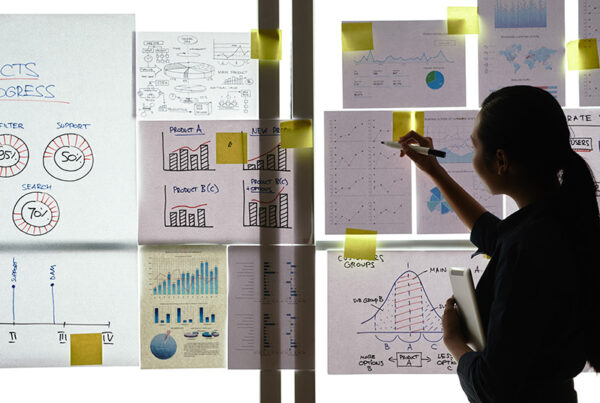Summary
Sales tax integration isn’t a side project. It’s how SaaS finance teams keep invoices compliant, revenue clean, and auditors calm. Linking your billing system directly to a tax engine automates jurisdiction rules, VAT/GST rates, and exemption checks—so finance doesn’t drown in manual reconciliations. Done right, it keeps revenue recognition accurate and month-end close predictable.
Key Points
- API-level integration between billing and tax engines prevents delays and bad data.
- Automating jurisdiction logic supports U.S. sales tax, VAT, and GST in one flow.
- Exemption certificate management should live inside the billing workflow.
- Sales tax sits on the balance sheet as a liability, never in ARR or MRR.
- Avalara handles complex global setups; TaxJar fits lighter SaaS stacks; Sovos scales enterprise.
- A “safe rate” fallback keeps invoicing live if the tax engine goes dark.
- Aligning tax codes across billing, GL, and reporting avoids reconciliation noise.
- The payoff: less compliance drag, fewer restatements, faster closes.
Frequently Asked Questions
What are best practices for tax integration mapping in SaaS?
Best practices for tax integration mapping in SaaS start with a centralized product and customer master. Map product categories to precise tax codes at the catalog level. Connect customer locations and tax-exempt statuses to appropriate jurisdictions. Maintain consistent data mapping across your quote-to-cash systems. Regularly update these mappings. This ensures accurate, compliant sales tax application and adapts to regulatory changes.
Why integrate tax engines directly with SaaS billing?
Integrating tax engines directly with SaaS billing ensures unparalleled accuracy in sales tax application for every invoice. It automatically adapts to evolving multi-state and international tax laws, preventing costly miscalculations. This precision safeguards against revenue leakage and customer overcharges in recurring billing cycles. It also provides audit-ready logs, ensuring clean general ledger postings and robust financial integrity.
How should SaaS billing systems handle multi-state tax compliance?
SaaS billing systems must manage multi-state tax compliance by classifying SaaS offerings per state-specific taxability rules. They should apply correct sales tax rates to each product SKU. Crucially, the system must manage customer exemption certificates. Maintaining an audit-ready record of all tax determinations is vital. This streamlines reporting and ensures robust compliance.
How should SaaS companies handle tax certificate validation failures?
SaaS companies should handle tax certificate validation failures by ensuring an auditable process. When a certificate fails, your billing platform should apply sales tax and create a detailed log. Notify customers for updated documents. Store all certificates in a centralized, secure repository. Regularly revalidate existing certificates to proactively prevent exemptions from lapsing. This secures compliance and safeguards against potential audit penalties.
What’s the best B2B SaaS tax integration solution for small vs. enterprise companies?
Small B2B SaaS companies need lightweight, API-first tax integrations with built-in billing connectors and automated filing. Enterprises need more control, with global VAT or GST support and detailed exemption workflows across entities. In both cases, tax must be built into the billing process, not added later. This approach keeps compliance scalable and avoids manual reconciliation or missed revenue.
How do Avalara, TaxJar, and Sovos compare for SaaS billing?
Avalara supports complex tax rules and global compliance for mid-market and enterprise SaaS. TaxJar offers a fast, U.S.-focused setup that fits startups with simple subscriptions. Sovos is best for advanced exemption handling and international reporting. Choose based on where you sell, how complex your exemptions are, and how deeply you need to connect billing and ERP systems.
What fallback mechanisms exist for tax calculation failures?
If a tax engine fails, use a pre-set safe tax rate, such as the highest state rate, and flag the invoice for review. Always log the error, input data, and time of failure. Stop the invoice from finalizing until the issue is fixed. Notify your RevOps or finance team so the transaction can be verified and reposted correctly.
How do SaaS companies handle VAT and GST in tax integration?
SaaS companies should validate customer VAT or GST IDs at checkout and apply reverse-charge rules for cross-border sales. The system must use the customer’s country as the place of supply, not the billing address. Each invoice should include correct tax IDs and line-item breakdowns. Store these records to meet local e-invoicing and audit rules.
How does sales tax integration affect deferred revenue schedules?
Sales tax is a liability, not earned income. Your billing system should separate the tax amount at invoicing so only the subscription value flows into deferred revenue. Excluding tax keeps revenue schedules clean, ensures ASC 606 compliance, and avoids overstating your financial performance.
How does tax integration support audit readiness?
A strong tax integration creates a full record for every transaction, including customer location, tax code, rate, and exemption certificate ID. This record should match the amounts reported in tax filings and be easy to search by customer, date, or product. Centralized data removes manual work and speeds up audit responses.
Subscription Billing Software
For SaaS, cloud, and recurring revenue models
What tax integration issues arise with usage-based billing?
Usage-based billing needs tax applied at the line-item level based on actual consumption. Different usage types, such as compute or storage, may be taxed differently across states. Late or missing usage data can cause errors. Billing systems should apply the correct rate at billing close and keep a timestamped record of each calculation.
How should SaaS billing handle exempt customers?
Validate exemption certificates in real time before marking a customer as exempt. Store certificates securely with details such as expiration date and jurisdiction. Set automatic reminders for renewal. Apply exemptions only to qualifying products. Never allow manual overrides without an audit log.
What’s the biggest risk of manual tax handling in SaaS billing?
Manual tax handling often leads to under-collection, missed nexus thresholds, or wrong rates. In recurring billing, a single error can repeat across thousands of invoices. This exposes the company to penalties and restatements. Automated tax management is the only reliable way to maintain accuracy and compliance at scale.
What features should a SaaS tax integration include?
A complete tax integration should provide real-time rate calculations, SKU-level taxability mapping, certificate validation, and automatic nexus tracking. It should log every transaction for audits and update rules without code changes. The system must connect directly to billing and accounting platforms, not rely on spreadsheets or manual uploads.
How do tax requirements evolve as SaaS companies scale?
As SaaS companies grow past $10 million in ARR, they face new tax obligations in more states and countries. Global customers may require VAT or GST handling and exemption management. Manual tracking becomes impossible. Automated tax logic and centralized certificate management ensure compliance without slowing down billing operations.
How does tax integration affect SaaS customer billing experience?
Accurate tax integration makes billing transparent and predictable. Customers see correct tax amounts upfront and receive clean, compliant invoices. When exemption validation happens instantly, there are fewer disputes or retroactive credits. The result is faster payments and higher trust in your billing process.
What governance is needed for SaaS tax integration?
Finance should define tax policy, RevOps should manage catalog codes and exemptions, and IT should maintain data integrity. Review tax mappings and certificates quarterly. Keep documentation for every change and store versioned updates tied to your product catalog. Strong governance makes audits faster and compliance easier.
How does sales tax integration impact revenue forecasting?
Tax integration keeps forecasts accurate by ensuring only net revenue, not tax, flows into financial models. When tax is mixed with revenue, ARR and margin projections become inflated. Clean separation at the billing layer gives finance and sales teams a true picture of recurring performance.
How should tax amounts map to the general ledger?
All tax collected should post to a liability account, such as “Sales Tax Payable,” not to revenue. Create separate sub-ledgers for each jurisdiction. Reconcile monthly between amounts collected and amounts filed. This keeps your balance sheet accurate and your audits straightforward.
Why automate sales tax integration in SaaS billing?
Automated tax integration keeps rates accurate across thousands of jurisdictions and invoices. It prevents revenue loss from exemption errors and manual entry mistakes. Automation speeds up invoicing, supports faster closes, and keeps audit trails complete. It also frees finance teams to focus on analysis, not data correction.
Conclusion
Tax automation doesn’t make SaaS glamorous, but it keeps the numbers honest. When billing and tax data move in lockstep, finance leaders spend less time patching errors and more time steering growth. Clean integrations scale; manual workarounds don’t.
Related Blogs posts on Subscription Billing
 The Quote-to-Cash Process for Subscriptions and SaaS
The Quote-to-Cash Process for Subscriptions and SaaS
The Quote-to-Cash Process for Subscriptions and SaaS
 How to Migrate from a Manual or Homegrown Billing System
How to Migrate from a Manual or Homegrown Billing System
How to Migrate from a Manual or Homegrown Billing System
 Step-by-Step Process to Successfully Implement a New SaaS Billing System
Step-by-Step Process to Successfully Implement a New SaaS Billing System
Step-by-Step Process to Successfully Implement a New SaaS Billing System
Get a Demo
See Ordway’s subscription billing software in action. Schedule a 30-minute Ordway demo with one of our sales engineers.


